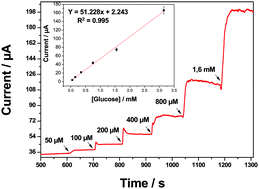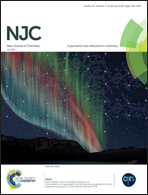Highly sensitive and selective non-enzymatic monosaccharide and disaccharide sugar sensing based on carbon paste electrodes modified with perforated NiO nanosheets
Abstract
Herein, we report the fabrication and detailed characterization of a new electrochemical enzyme-free sensor for the direct sensing of monosaccharide and disaccharide sugars based on perforated NiO nanosheets (NSs). The NiO nanosheets were synthesized by a facile hydrothermal process followed by annealing and they were characterized in terms of their morphological, structural, compositional and optical properties. Detailed characterization confirmed the large-scale synthesis, good crystallinity and high purity of the synthesized perforated NiO nanosheets. To fabricate sugar sensors, sensor electrodes were prepared by modifying carbon paste with the perforated NiO nanosheets. Cyclic voltammetry and amperometry techniques were used to investigate the effect of the NiO nanosheets on the electrocatalytic oxidation of monosaccharide and disaccharide sugars. The electrodes exhibit a high sensitivity to glucose (724 μA mM−1 cm−2), with a low detection limit (10 μM), and respond over a wide linear range (from 50 μM to 3 mM). The analytical performance of the developed sensors, in addition to their ease of fabrication, qualifies them to be a good platform for enzyme-free sugar sensing.



 Please wait while we load your content...
Please wait while we load your content...